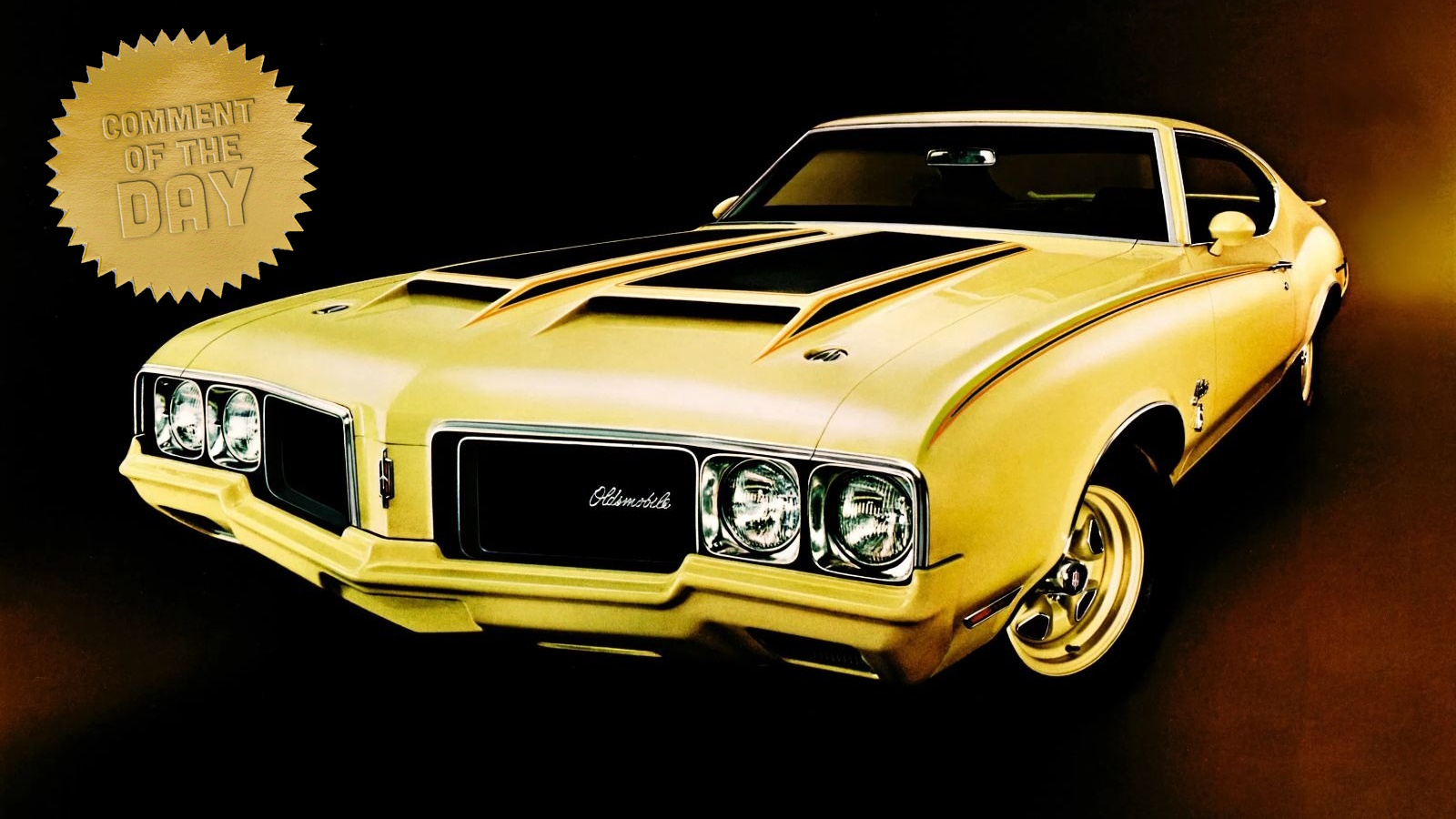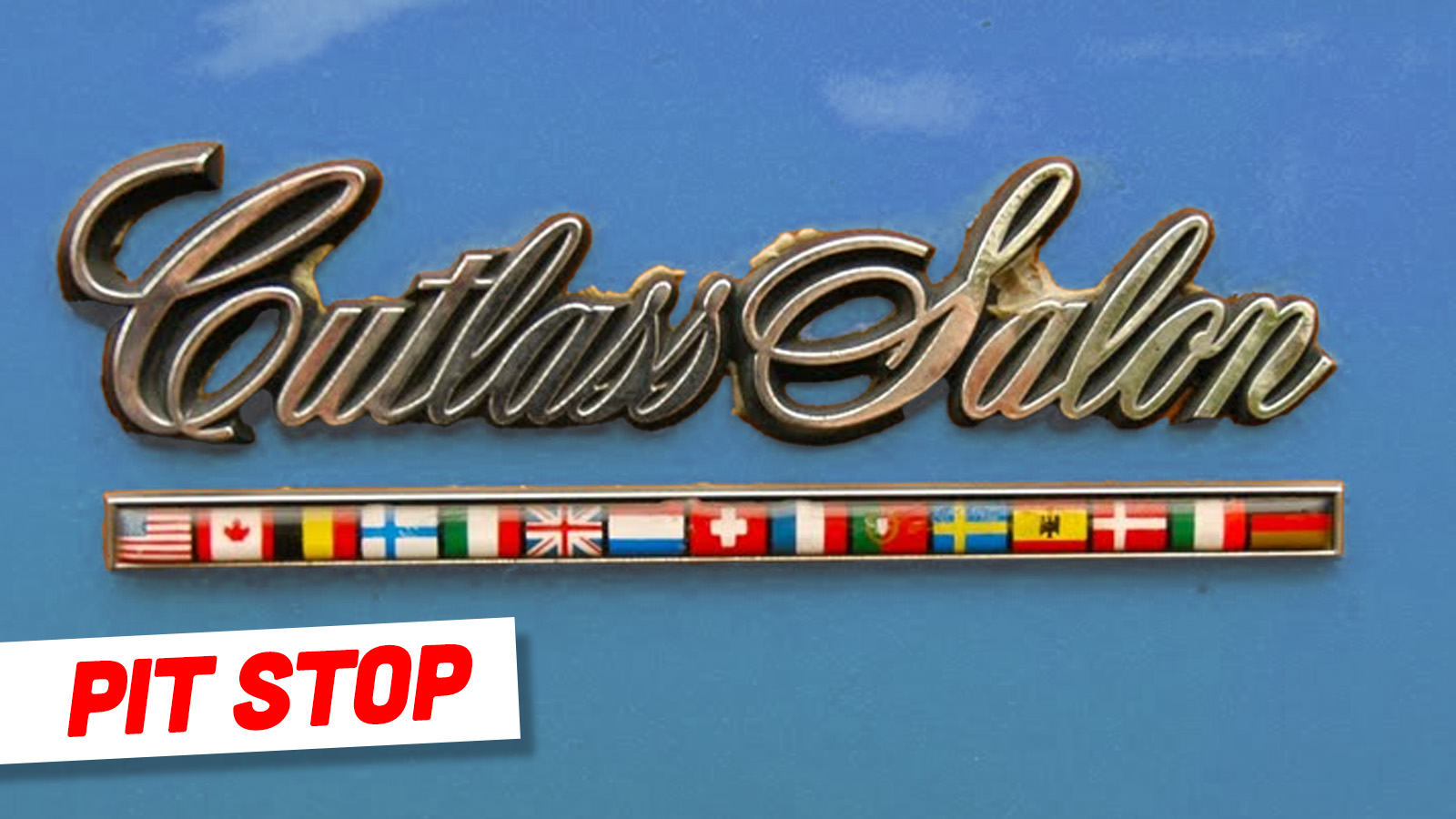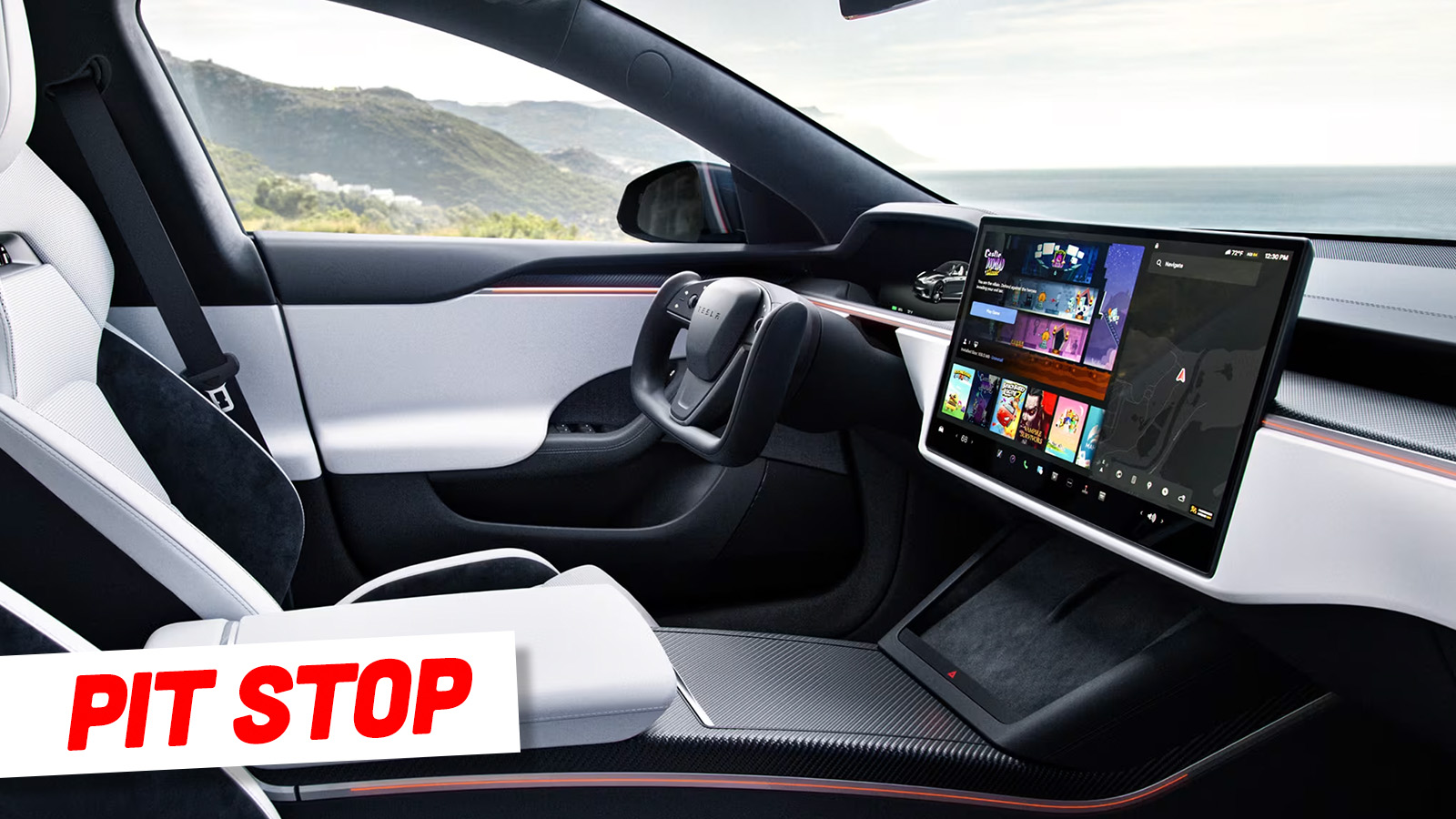The artists and craftspeople involved in movie productions are practically magicians. They can turn any concept – seemingly no matter how crazy – into something to display on the silver screen. All of it’s impressive, but even more mind-blowing is when something bombastic is done without computer aids. That’s the case of the bus on your screen today. The Big Bus wasn’t a serious movie whatsoever, yet the title’s bus very much was. The Cyclops was a real vehicle featuring 32 wheels, 110 feet of length, 10.5 feet in width, and a height so tall that practically every bridge was a can-opener. It’s easily the wildest bus ever built and wait until you find out how much it costs.
When the Big Bus hit theaters on June 23, 1976, the movie landed with a resounding thud. In theory, it had the right ingredients. The movie was a satirical rip on the disaster genre of the 1970s. Disaster movies love tropes like a fateful first or final voyage, plane crashes, nonsensical danger scenarios, plane hijackings, or the crowd favorite, the extinction-level event. The Big Bus laughed at pioneers of the genre like Airport and Earthquake.
The plot laid it on thick. In the movie, the fictional Coyote Bus Lines launched a breakthrough. The company’s new bus, the Cyclops, is a gigantic marvel of engineering that’s capable of driving from New York City to Denver non-stop thanks to its nuclear propulsion system. The Big Bus follows just about every disaster movie trope by rendering the bus out of control, a bomb blows up, the bus nearly drives off of a cliff, there are terrorists on board, and of course, the titular hero has a troubled past.
The movie itself got mixed reviews and was a box office bomb, but it is a sort of a cult classic today. It’s sort of just bad enough to come back around to being fun again.
To me, someone who practically lives and breathes buses, the most exciting part about the movie is the Cyclops itself. Now, movie and television productions have a bunch of different ways to make vehicles like this. Older Star Trek shows famously used scale models of its iconic starships for filming. Today, a production might just go straight to CGI. But the Cyclops? Amazingly, a ton of work went into making it a real, moving vehicle.
Movie Magic Brought To Life

There are two major sources for the story of the Cyclops. One is Bus World, the long-defunct magazine for bus nuts like myself. Motor Trend also wrote about the bus in 1976. Thanks to an obsessive search, I’ve been able to find the Motor Trend issue in question, piecing together a wild ride.
David Sandmeier of Bus World traveled to Paramount Pictures to get the scoop on the so-called Coyote Cyclops 180. According to Sandmeier, Paramount sent the order for the bus down to the construction and special effects teams. There was only one problem as nobody had any idea how to build a 110-foot-long bus.

America’s bus manufacturers didn’t, either. The 1970s weren’t that much different from today. Motor Coach Industries and Eagle were the big names in buses back then and while they could have built the production a 40-foot coach, the bus manufacturers had no clue how to build something of the scale demanded by Paramount.
In a classic move of throwing stuff at the wall and seeing what stuck, the production team figured out a vague plan. They would buy two International semis and build two 55-foot bus bodies on top of them. The truck-buses could then be driven to a filming location separately and then latched together to create the 110-foot monster desired by Paramount.

As Bus World continued, everyone knew that Paramount wanted a gigantic bus that actually ran down the road as well as provided the audience with laughs, but that was it. The art department didn’t even have a concept and the production’s designers had nothing to refine, leaving the construction crew with nothing to build. But this didn’t stop the construction and special effects teams, led by Gaile Brown and Lee Vasque, respectively. They wheeled the Internationals into the Paramount production lot and a crew of welders, painters, carpenters, and more got to work.
The team toiled through 12-hour workdays seven days a week cutting and welding metal, painting, and messing around with axles, drivetrains, and chassis until they landed on something they liked. Yep, the end result you see here was basically created through trial and error rather than through any sort of guide or designs like the teams would usually have.


Amazingly, much of the bus was real. Up front was a driving area inspired by a flight deck. The bus had seating for two drivers and at first, both drivers had a full complement of working controls, just like they would have in a plane. Later on, the front International truck lost its engine and manual transmission, getting a Ford engine and an Allison automatic in its place. In doing the drivetrain swap, the construction team gave the left driver the automatic transmission shifter, but otherwise, the bus was still controllable by both drivers.
Another dramatic change up front happened with the front axle. The single front axle of the International donor truck wasn’t going to work, so the construction team doubled up the axles and then doubled the tires on them, too. That meant this gigantic bus had a total of eight steer tires. A grand total of 32 tires were mounted on the bus at any given time and there were more available as spares.

Perhaps even more impressive was the fact that above the driver control room was a fully functioning cocktail bar. Sadly, most of the rest of the bus behind the complete front section was empty. The construction crew welded chairs into the floors next to the windows for the actors to sit in, but the bus was otherwise hollow.
The bus in the movie had a single-lane swimming pool and a tiny bowling alley, but in real life, those were done on soundstages. Likewise, the other features of the bus, like its comical automatic tire changer that ejected tires into the wilderness, or the bus-sized automatic cleaning machine, were also simulated.


The Sheer Scale Of The Thing
That said, everything that was built on the Cyclops 180 was ridiculous. At 110 feet long, it was substantially longer than any other bus on the road, and that includes articulated buses. At 10.5 feet wide, it was too girthy to drive on basically anything but Interstates. Then there was the height. At 18.3 feet tall, it made semi-tractors look like children’s toys.

The Cyclops was so huge it made regular buses look like passenger cars. Your typical coach bus is only 8 feet wide, 40 feet long, 11 feet tall, and might have 10 wheels if it’s particularly heavy.
In April 1976, Motor Trend published a joke review of the Cyclops that was perhaps even better than the movie itself. In this joke review, John Pashdag tells a story about how a friend working for Greyhound mentioned that the firm’s rival was working on something big. How big? A bus so big it has a swimming pool and a bowling alley while still carrying 180 people. A bus so big it runs on nuclear power.

Pashdag explained the fictional idea behind the Cyclops. It is supposed to combine the comfort of jet aircraft with the economy of a bus to provide the sort of ultra-low-cost transportation Amtrak promised. Canonically, the Cyclops was powered by the kind of engine that would normally be used in an aircraft carrier, but scaled-down. In bus form in the movie universe, the engine made 3,000 HP.
Pashdag eventually gets out of character and admits that he was just joking with you. But he follows it up with additional context. The bus really was as long as the movie says it was. Pashdag notes that the bus body was made out of fiberglass and that the articulating section had only a few degrees of rotation. The entire truck just couldn’t turn around on its own or even take sharp corners. It basically had the turn radius of a battleship.

Pashdag also notes that the darn thing was crazy heavy, weighing in at 75 tons total and requiring a 125-ton crane to hang the front half over a cliff for those scenes. Why was it so heavy? Pashdag says that some 500 bolts held the halves together and they weighed about a pound each. The rear end required giant tandem wheels to support the simulated jet engine. There are four of the 5-foot-tall wheels and each clocked in at an incredible 1,100 pounds. In other words, this bus, even though it was largely empty, was simply full of heavy metal.
Reportedly, the lead stunt driver wanted to give Pashdag an opportunity to drive the bus so that the review could be actually real. Apparently, the producers and the film’s insurance agent didn’t like that idea.

The sheer size of the thing meant that stunt drivers had to drive the halves of the buses to different filming locations around Los Angeles. Then, when it was time to get the cameras rolling, the halves were connected together in a process that apparently took less than 45 minutes. When connected as a whole bus, the stunt driver in the rear half of the bus was still driving, but coordinating with the driver in the front half for maneuvers.
Despite that, the bus reportedly had decent performance, reaching speeds of 65 mph with both halves connected. That was right on the mark with what an MCI of the era did on the highway! One downside, aside from the sheer size and weight of the thing, was the fact that the rear half’s observation dome had to be deleted in order for the bus to fit under bridges in the LA area.


It’s believed the halves were never really connected for a very long time, with the longest stint being a promotional drive from Los Angeles to San Diego as part of a promotional stunt for the film. Still, despite all of the weird hackery and compromises, the Cyclops was a real running and driving vehicle.
Back then and arguably even today, it was the most bombastic bus-shaped vehicle ever built. Its absurdity was matched only by its price. It cost the production team $500,000 to build the Cyclops. How expensive was it? That dollar figure could have bought them five regular coach buses.
Only In Memories Now

Sadly, after the movie bombed and most people forgot about the flick, Paramount apparently felt no need to keep 75 tons of bus sitting around. The Coyote Cyclops 180 was scrapped, leaving behind nothing but memories and the handful of photos that were taken of the rig.
While I understand getting rid of something like this – storage costs alone would be astronomical – I’m still sad it happened. It may not have been a fully finished bus, but the Cyclops was a work of art and clever engineering. This production team made a bus that was grander than anything that has ever come out of any real bus manufacturer, and that’s just too awesome. Maybe one day we’ll see crazy like this again.
If you know any more information about the Coyote Cyclops 180, send me a message at mercedes@theautopian.com. I’d love to learn more about this thing!
Pete poppin’ in here. Every shot of the Cyclops is condensed into the video below, enjoy!
(Screenshots: Paramount Pictures.)










This is currently free on YouTube…watching now
https://youtu.be/vfGD1iOBFcM?si=S33y5pXGPKOhscDZ
Yeah, but what kind of taillights did it use? Ha ha…This thing is so fucking awesome and I agree it’s sad that it’s no longer around. I’ve got to watch this movie sometime
You mean to tell me that Airplane! is just a derivative remake of The Big Bus? Just fish slap me https://www.youtube.com/watch?v=NeIkFhMI2IE (Wisconsin Tourism Ad by the creative team from Airplane, filmed on the same lake as my cottage).
I saw this film as a kid but have limited memories of it–it was on TV…I never knew it actually had a theatrical release. I just want to point out that there were so many over the top movies in that era that this didn’t seem that unusual.
IIRC the last scene of the movie is the bus splitting in half at it’s joint.
I must have watched this a dozen times as a kid. There is one scene when they are trying to get over 90 mph and the bowling alley starts shooting balls back at the bowlers. I haven’t seen it it 45 years, but I sure hope it’s streaming. Plus, it has Stuart Margolin, who my screen name is in reference to.
10/10 would daily the front half.
When I first saw this thing many moons ago in the halcyon Web 2.0 days, there was some speculation that it was based off a Prevost H5-60. It was wild to me that they thought it was a good idea to build that model, even.
(Would still daily the front half. I don’t want to deal with a trailer 100% of the time)
I have something of a fetish for dual front axle vehicles. I always worry about the alignment. It’s hard enough to keep a single front axle vehicle aligned. I wonder how they do it with the dual for an axle?
If you don’t live in Europe, move here. Especially Scandinavia. Half of the tippers here have 2 front axles. You know they turn in different radiuses right? And then there are trucks which have a steerable and raisable rear axle. Or two.
And from what I know, it’s not too difficult to align them. They are of course solid axles, so to adjust toe you just need to extend/retract the link holding the wheels together. Camber is an other question though.